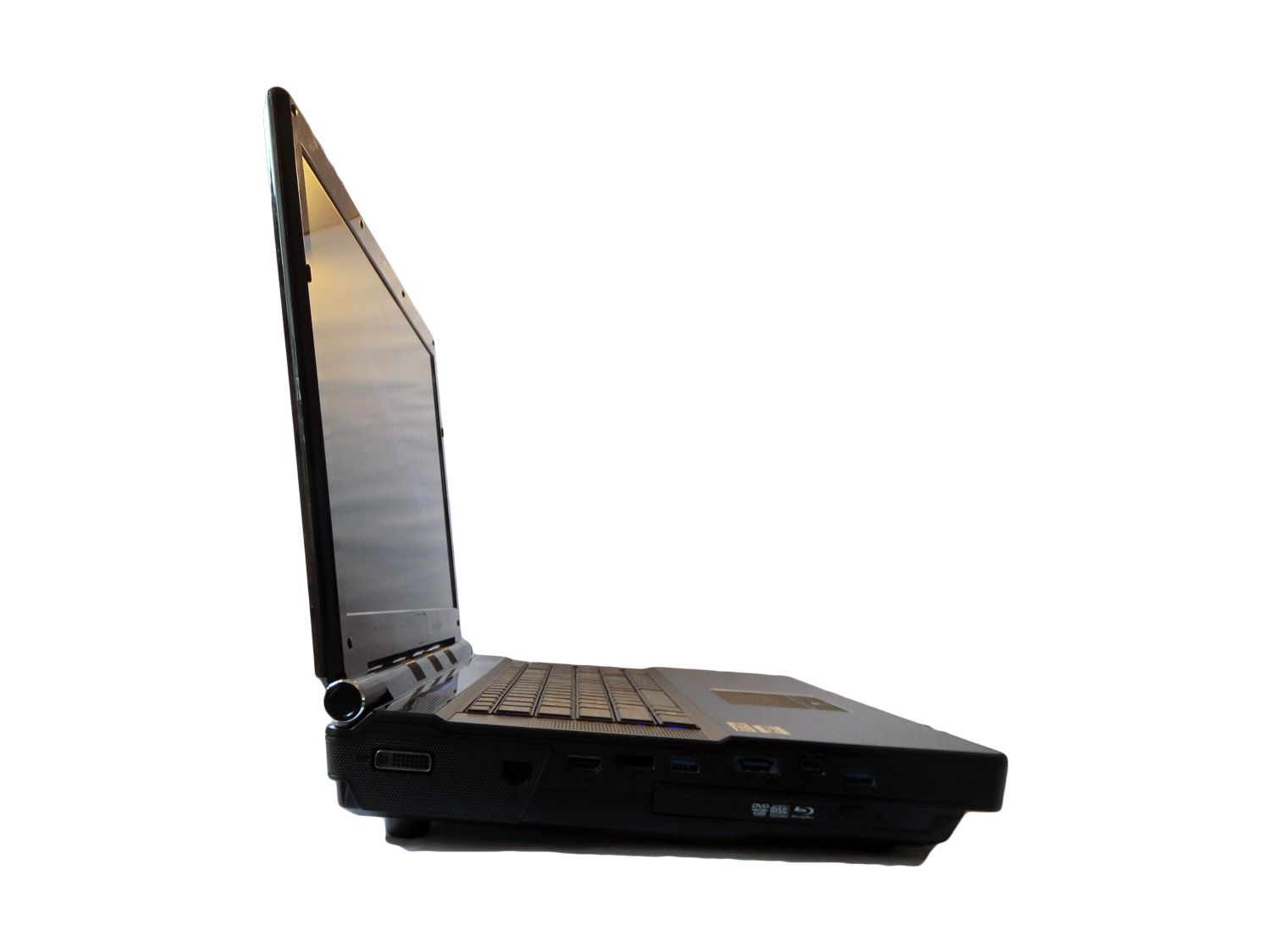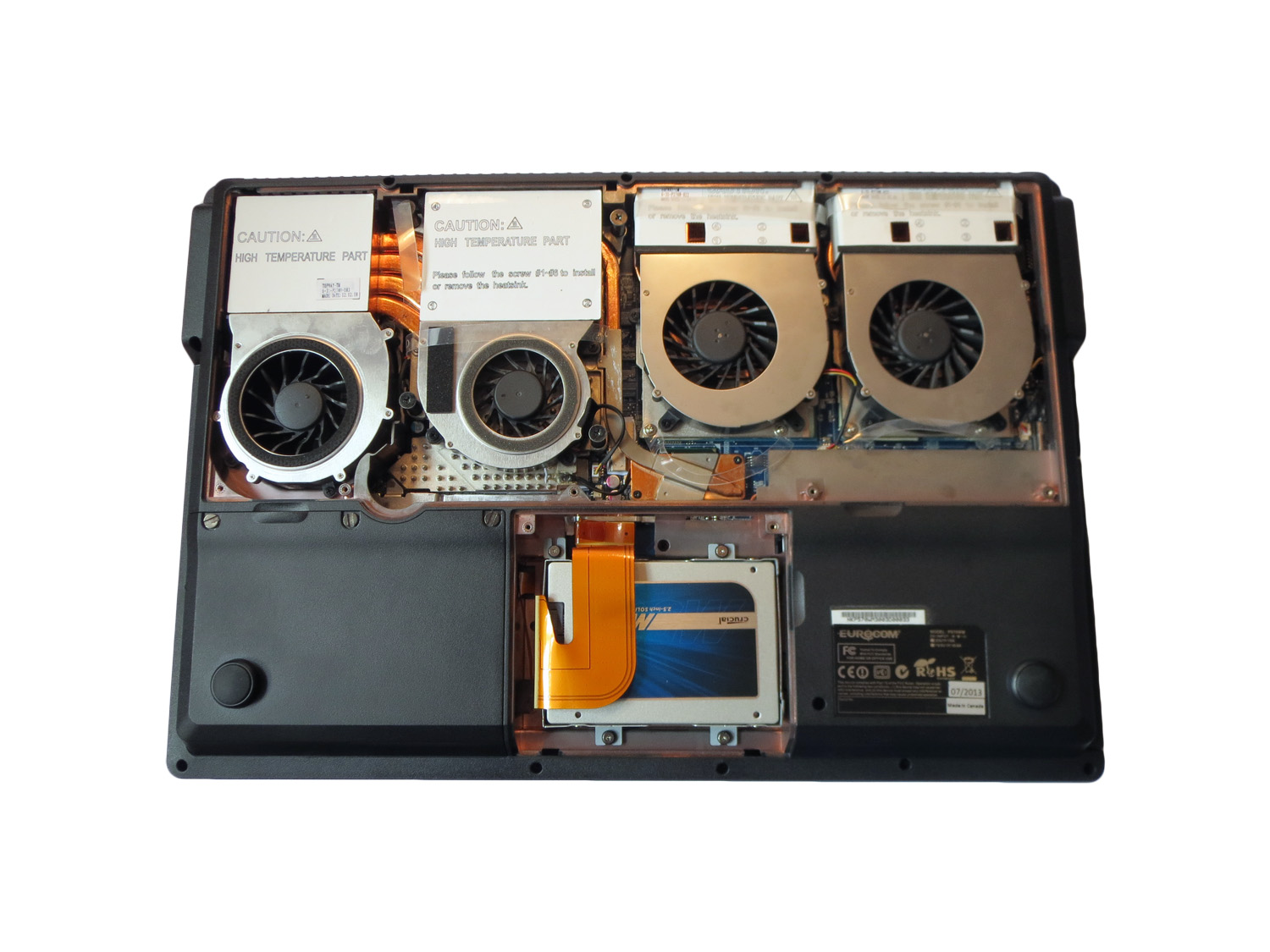Eurocom Panther 5D review
With an Intel Xeon processor and 32GB of RAM, this beast of a laptop outperforms most desktops. But it'll cost you £6,000.


The Eurocom’s extreme price means that this machine will only appeal to a small niche of people, but stratospheric levels of poweracross the board means it’s ideal for those who want to carry out 3D video production, mapping, medical imaging and industrial design. Just don’t expect it to be an easy system to live with: it’s 74mm thick, weighs 5.5kg, and its battery barely lasts for an hour.
-
+
Ridiculous power level; Good screen; Accessible interior; Rock-solid build; Huge customisation options
-
-
Heavy, bulky design; Sky-high price; Dreadful battery life

Design and internals
The 74mm-thick chassis and 5.5kg weight offer tank-like protection. The build quality on the Panther is excellent, with a rock-solid wrist-rest, sturdy base and a screen that barely flexed about what we'd expect, considering the screen itself is 13mm thick.
The right-hand side has two USB 2 ports, four audio jacks and a Kensington lock slot, and the left-hand edge houses a pair of USB 3 ports, FireWire, DVI-I, HDMI, DisplayPort and Gigabit Ethernet connections. An eSATA socket doubles as a third USB 3 port. The power plugs into the rear, and the front of the machine has status lights, an SD card reader and even a Smart Card slot something we've not seen on a laptop for years.
Unlike many Ultrabooks, much of the Panther's base isn't taken up by its battery most of the room inside this machine is dedicated to components. We removed the hefty bottom panel and revealed four 60mm fans. Two blow cold air across the chunky heatsink on top of the LGA 1155 processor socket an odd sight in a laptop and the other two cool the GPUs. They're easy to remove, and the wireless card, processor socket and memory slots are all accessible.

A smaller panel can be removed for access to the SSD and hard disk, with both stored in a 2.5in metal caddy. The battery is next door, takes up about one quarter of the base, and there's another 2.5in drive bay underneath.
The Panther 5D's rock-solid base means the keyboard is a pleasure to use: snappy typing, good resistance, and light keys. The trackpad is unfussy but similarly comfortable, and there's room for a number pad. We've only got one quibble, and it's the Return key we've no idea why it's single-height.
The speakers have ample volume and bass understandable given the five discrete units and a subwoofer. Quality is impressive, with bass that doesn't overpower the treble and mid-range.
Screen time
The 17in diagonal features 1080p resolution and 3D capabilities, and it doesn't just impress on paper it's good in practice, too.
The measured brightness level of 409cd/m2 is scorching: better the screens in the Retina-equipped MacBook Pro and Dell's excellent Precision M6700 mobile workstation.
The Panther's contrast ratio of 753:1 is good, and falls between the Apple and Dell machines. The average Delta E of 4.6 again fell between the two rivals, and the gamma level of 2.2 isn't far from the ideal measurement of 2 which means rich, warm colours throughout.
The only disappointment is the black level of 0.53cd/m2. It's a little high, and it means that blacks aren't as deep as they could be, and it also causes the darkest shades to crush together slightly. Still, we're more than happy with this screen, which has the resolution and accuracy to be used for demanding graphical work.
Get the ITPro daily newsletter
Sign up today and you will receive a free copy of our Future Focus 2025 report - the leading guidance on AI, cybersecurity and other IT challenges as per 700+ senior executives
Mike Jennings has worked as a technology journalist for more than a decade and has been fascinated by computers since childhood, when he spent far too long building terrible websites. He loves desktop PCs, components, laptops and anything to do with the latest hardware.
Mike worked as a staff writer at PC Pro magazine in London for seven years, and during that time wrote for a variety of other tech titles, including Custom PC, Micro Mart and Computer Shopper. Since 2013, he’s been a freelance tech writer, and writes regularly for titles like Wired, TechRadar, Stuff, TechSpot, IT Pro, TrustedReviews and TechAdvisor. He still loves tech and covers everything from the latest business hardware and software to high-end gaming gear, and you’ll find him on plenty of sites writing reviews, features and guides on a vast range of topics.
You can email Mike at mike@mike-jennings.net, or find him on Twitter at @mikejjennings
-
 Cleo attack victim list grows as Hertz confirms customer data stolen – and security experts say it won't be the last
Cleo attack victim list grows as Hertz confirms customer data stolen – and security experts say it won't be the lastNews Hertz has confirmed it suffered a data breach as a result of the Cleo zero-day vulnerability in late 2024, with the car rental giant warning that customer data was stolen.
By Ross Kelly Published
-
 Women show more team spirit when it comes to cybersecurity, yet they're still missing out on opportunities
Women show more team spirit when it comes to cybersecurity, yet they're still missing out on opportunitiesNews While they're more likely to believe that responsibility should be shared, women are less likely to get the necessary training
By Emma Woollacott Published
-
 OpenAI wants developers using its new GPT-4.1 models – but how do they compare to Claude and Gemini on coding tasks?
OpenAI wants developers using its new GPT-4.1 models – but how do they compare to Claude and Gemini on coding tasks?News OpenAI says its GPT-4.1 model family offers sizable improvements for coding, but tests show competitors still outperform it in key areas.
By Ross Kelly Published